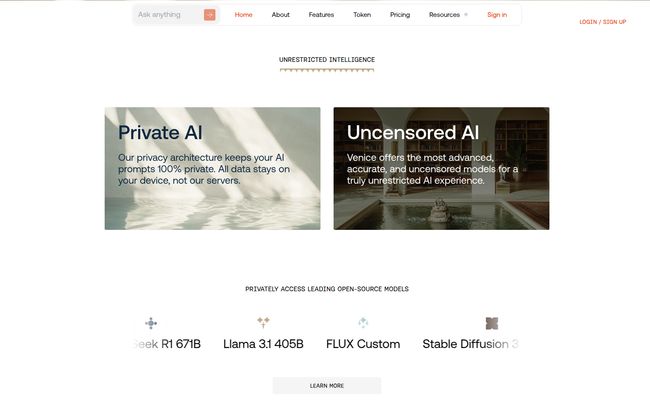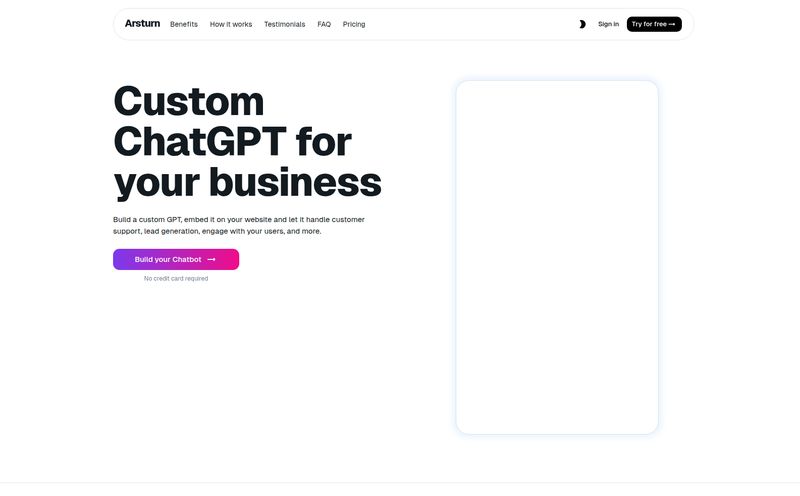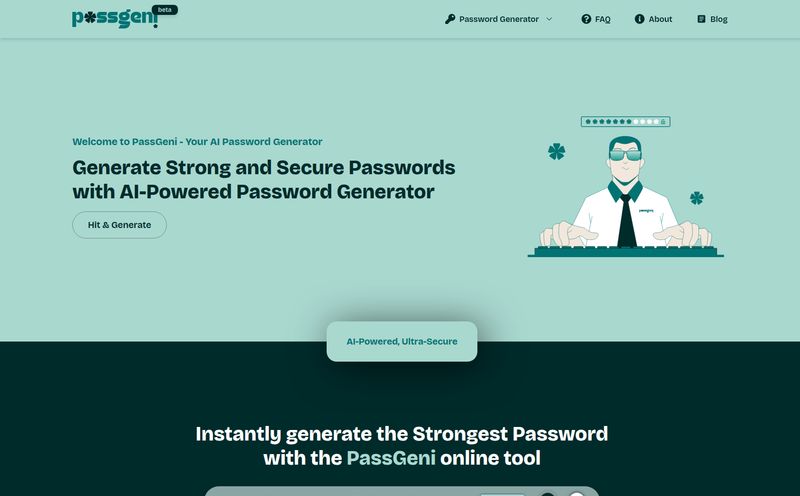We've all had that moment with an AI chatbot. You're trying to write a gritty scene for your novel, brainstorm a provocative art piece, or debug some tricky code, and BAM. You hit the wall. "I cannot generate content of that nature." It's frustrating. It feels like having a creative partner who's also a hall monitor.
Even worse is the nagging thought in the back of your head: where is this data going? For years, we've basically accepted that our prompts, our ideas, our very creativity, are just fuel for the big tech machine. They're hoovered up to train the next model, analyzed for... who knows what. It’s a trade-off we’ve been forced to make for access to this incredible technology.
But what if it didn't have to be that way? I've been hearing whispers in the SEO and dev communities about a platform taking a different path. A platform called Venice AI. Their claim is simple but radical: private and uncensored AI. Naturally, I was skeptical. I’ve seen promises like this before. So, I rolled up my sleeves and spent some time with it. And I have some thoughts.
So, What Exactly Is Venice AI?
At its core, Venice AI is a suite of generative tools for creating text, images, code, and even unique AI characters. Sounds familiar, right? But here's the twist. The entire platform is built on a decentralized network. That's not just marketing fluff; it means your prompts are designed to stay on your device. They aren't sent to a central server for logging and analysis. It's a fundamental architectural choice that puts user privacy first.
Think of it like this: using most AIs is like whispering your secrets to a bartender who's also a notorious gossip columnist. Using Venice AI is like writing in a locked diary. The contents are for your eyes only. This approach allows them to offer access to powerful, leading open-source models like Llama 3 and Stable Diffusion without the usual heavy-handed restrictions.

Visit Venice AI
The Two Pillars: Unpacking Privacy and Creative Freedom
These aren't just features; they're the entire philosophy behind Venice AI. And in my opinion, they directly address the two biggest pain points for serious AI users today.
Privacy First, For Real This Time?
The promise of 100% private AI prompts is a huge deal. As someone who uses AI for client-facing SEO strategies and content outlines, the idea of my proprietary methods being absorbed into a global model gives me the shivers. Venice AI's architecture is a direct solution. By keeping the inference on your device (or through their privacy-focused API), you retain ownership of your inputs. It's a refreshing change of pace from the "you are the product" model we've become accustomed to. No more looking over your shoulder, wondering if your brilliant idea is about to become training data for your competitor.
Breaking the Chains of AI Censorship
Okay, let's talk about the elephant in the room: the "uncensored" part. This isn't about creating nefarious content. For creatives, this is about freedom. It's about writing a horror story without the AI clutching its pearls. It's for artists exploring complex themes without being shut down by an overzealous filter. Venice AI gives you access to the raw power of these open-source models.
The Pro plan even has a toggle to "Disable Safe Venice mode." That level of control is almost unheard of. Some will argue about the potential misuse, and that's a valid discussion for teh wider industry. But from a creator's standpoint, it’s a breath of fresh air. It trusts the user to be the artist, the writer, the director. Finally.
A Quick Tour of the Venice AI Toolkit
Beyond its core philosophy, the platform is genuinely useful. It’s not just one thing; it's a multi-tool for modern creators and builders.
From Complex Text to Clean Code
The text generation is powered by some of the best open-source LLMs out there, including the powerhouse Llama 3. Whether you're drafting articles, writing emails, or generating dialogue, the quality is top-notch. The same goes for code. I threw some Python scripts at it, and it handled debugging and boilerplate generation with ease. The privacy aspect is especially critical here; no one wants their proprietary code floating around in the ether.
Unleashing Your Inner Artist with Image Generation
Leveraging models like Stable Diffusion and FLUX Custom, the image generation is robust. You can create anything from photorealistic landscapes to abstract digital art. The free plan does add a small watermark, which is fair, but the Pro plan removes it and adds high-resolution upscaling—a must for any serious graphic work. The uncensored nature truly shines here, allowing for artistic expression that other platforms might deem too 'edgy'.
A Special Note for Developers: The Private Inference API
This got my attention. Venice AI offers a Private Inference API. For non-devs, an API is how different software talks to each other. A private one means developers can build Venice's AI capabilities into their own applications without leaking user data. Imagine a healthcare app using AI to summarize notes privately, or a legal tech tool analyzing documents without sending sensitive information to a third party. This is a game-changer for businesses where data confidentiality is non-negotiable.
Let's Talk Money: The Venice AI Pricing Breakdown
Alright, so how much does this digital freedom cost? The pricing structure is refreshingly straightforward.
The Free Tier: For $0, you get a pretty generous test drive. It includes private text, image, and code generation using the base AI models. You're limited to 25 text prompts and 15 image prompts per day. For a casual user or someone just wanting to see what it's all about, this is more than enough to get a feel for the platform.
The Pro Plan: This is where things get serious. For $18 per month, the floodgates open. You get everything in the free tier, plus access to the most advanced AI models, character creation tools, unlimited prompts, no more watermarks on images, high-res upscaling, and the golden ticket: the ability to disable the safety filter. If you're a heavy user, a creative professional, or a developer, this is an easy decision. The unlimited prompts alone are worth the price of a few coffees.
My Honest Take: Who is Venice AI Really For?
After playing around with it for a while, I can confidently say Venice AI isn't trying to be a one-size-fits-all solution like some of its bigger competitors. And that's its strength. It’s a specialized tool for a specific type of user.
This is for you if:
- You're a writer or artist who feels creatively stifled by mainstream AI filters.
- You're a developer or business owner who needs to integrate AI without compromising user data or intellectual property.
- You're a privacy-conscious individual who believes you should have control over your own data.
You might want to stick with other tools if:
- You're a very casual user who just needs a quick recipe or a simple email draft and couldn't care less about data privacy.
- You actually prefer having strong guardrails and content filters in place.
For me, the value is clear. The ability to brainstorm freely for my projects without self-censoring or worrying about data privacy has already made a difference in my workflow.
Frequently Asked Questions about Venice AI
Is Venice AI truly private?
By design, yes. It uses a decentralized architecture to ensure your prompts are processed on your device and are not stored on their servers. This is the core of their privacy promise.
What does "uncensored AI" actually mean?
It means the AI models have fewer restrictions and content filters compared to mainstream platforms. This gives you more creative control and reduces the likelihood of your prompts being blocked for exploring mature or complex themes. The Pro plan allows you to disable the main safety filter entirely.
Can I use Venice AI completely for free?
Absolutely. The free plan offers 25 text and 15 image prompts daily, which is great for trying it out. However, for unlimited use and advanced features, you'll need the Pro subscription.
What AI models does Venice AI use?
It provides access to a range of powerful open-source models, including Llama 3 for text, and Stable Diffusion and FLUX for images. They focus on providing high-quality, community-vetted models.
Is the $18/month Pro plan worth the cost?
In my experience, if you use AI daily for creative or professional work, it's a fantastic value. The combination of unlimited prompts, advanced models, and the uncensored option is a powerful package for that price point.
What is the Private Inference API for?
It's a tool for developers. It allows them to build Venice AI's private and uncensored generation capabilities directly into their own software, websites, or apps, ensuring their users' data remains confidential.
Final Thoughts on the Voyage to Venice
Venice AI is a bold and, frankly, necessary step in the evolution of artificial intelligence. It's a statement that power and privacy don't have to be mutually exclusive. While the giants of tech build bigger and bigger walled gardens, Venice is handing users the keys to their own creative kingdom. It may not be for everyone, but for the growing number of us who value freedom and privacy, it's not just a useful tool—it's a sign of a more user-centric future. And I'm here for it.
Reference and Sources
- Venice AI Official Website
- Venice AI Pricing Page
- Meta Llama 3 Information
- Stability AI - Stable Diffusion



